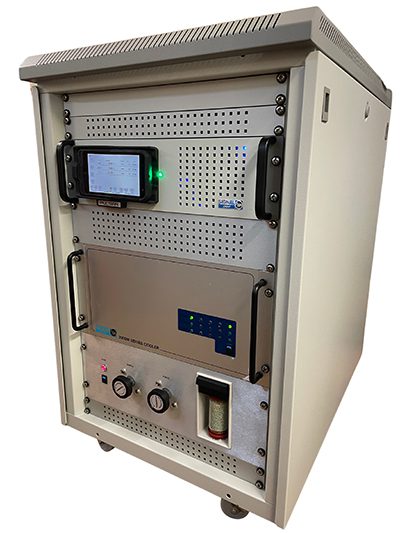
From 1st January 2022, a new regulation will impose Ecodesign requirements for solid fuel local space heaters. Regulation (EU) 2015/1185 24/5/2015 describes the requirements which will harmonise energy consumption, particulate matter (PM), organic gaseous compounds (OGC), carbon monoxide (CO) and nitrogen oxides (NOx) emission requirements for solid fuel local space heaters manufactured in the European Union. The regulation is also being applied in the UK.
Stephane Canadas from gas monitoring instrumentation manufacturer Signal Group, welcomes the new regulations, adding: “The latest stoves employ advanced technology that is able to dramatically lower emissions, so a new regulatory framework will help to highlight the benefits of more environmentally friendly products.
“It is also pleasing to note that standard reference methods are specified for the testing of stoves, and we have been supplying test houses with analysers so that they can check existing burners as well as the latest products, both during and after development.”
Conscious of the growing public demand for improved air quality and energy efficiency, leading manufacturers have been developing stoves that meet the new requirements, and in some countries testing and approval regimes are in place so that customers can choose products that comply with the new requirements.

Under the Regulation, new solid fuel local space heaters will have to be type-tested to measure the environmental performance of the devices, and all measurements of the combustion products are to be undertaken while the product is providing its nominal output and if appropriate at part load.
Organic gaseous compounds from solid fuel local space heaters shall not exceed 120 mgC/m3 at 13 % oxygen for heaters using solid fuel other than compressed wood pellets; and 60 mgC/m3 at 13 % oxygen for heaters using compressed wood pellets. Under Annexe III of the Regulation, OGC measurement, as measured in the combustion products of the appliance, shall be extractive and continuous and based on the use of a flame ionisation detector.
Carbon monoxide (CO) from solid fuel local space heaters shall not exceed 2,000 mg/m3 at 13% oxygen for open fronted solid fuel local space heaters; 1,500 mg/m3 at 13% oxygen for closed fronted heaters using solid fuel other than compressed wood pellets, and 300 mg/m3 at 13% oxygen for closed fronted heaters using compressed wood pellets. Under Annexe III of the Regulation, CO measurement shall be extractive and continuous and based on the use of an infrared detector.
Nitrogen oxides (NOx) from solid fuel local space heaters shall not exceed 200 mg/m3 expressed as NO2 at 13% oxygen for open fronted solid fuel local space heaters, closed fronted solid fuel local space heaters and cookers using biomass; and 300 mg/m3 expressed as NO2 at 13% oxygen for open fronted solid fuel local space heaters, closed fronted solid fuel local space heaters and cookers using fossil solid fuel. Emissions of nitrogen oxides shall be measured as the sum of nitrogen monoxide and nitrogen dioxide, and expressed in nitrogen dioxide. Under Annexe III of the Regulation, NOx measurement of the combustion products shall be extractive and continuous and be based on chemiluminescent detection.
Particulate matter (PM) emissions from open fronted solid fuel local space heaters shall not exceed 50 mg/m3 at 13% oxygen when measured by sampling a partial dry flue gas sample over a heated filter; or 6 g/kg (dry matter) when measured by sampling over the full burn cycle, a partial flue gas sample, using natural draft, from a diluted flue gas using a full flow dilution tunnel and a filter at ambient temperature.

PM emissions by closed fronted solid fuel local space heaters using solid fuel other than compressed wood pellets and cookers shall not exceed 40 mg/m3 at 13% oxygen when measured by sampling a partial dry flue gas sample over a heated filter; or 5 g/kg (dry matter) when measured by sampling over the full burn cycle, a partial flue gas sample, using natural draft, from a diluted flue gas using a full flow dilution tunnel and a filter at ambient temperature; or 2.4 g/kg (dry matter) for biomass or 5.0 g/kg (dry matter) for solid fossil fuel when measured by sampling, over a 30-minute period, a partial flue gas sample, using a fixed flue draft at 12 Pa, from a diluted flue gas using a full flow dilution tunnel and a filter at ambient temperature or an electrostatic precipitator.
PM emissions by closed fronted solid fuel local space heaters using compressed wood pellets shall not exceed 20 mg/m3 at 13% oxygen when by sampling a partial dry flue gas sample over a heated filter; or 2.5 g/kg (dry matter) when measured by sampling over the full burn cycle, a partial flue gas sample, using natural draft, from a diluted flue gas using a full flow dilution tunnel and a filter at ambient temperature; or 1.2 g/kg (dry matter) when measured by sampling, over a 30-minute period, a partial flue gas sample, using a fixed flue draft at 12 Pa, from a diluted flue gas using a full flow dilution tunnel and a filter at ambient temperature or an electrostatic precipitator.
The members of the Stove Industry Alliance (SIA), which is based in the UK, have been producing appliances that comply with the requirements of Ecodesign since 2017 when the organisation launched its SIA Ecodesign Ready certification label. Last year a brand new and independent appliance certification scheme, ‘clearSkies’, was launched. All appliances within clearSkies are certified as meeting the requirements of Ecodesign. clearSkies Level 3 also confirms that the appliance is Defra exempt for use in a Smoke Control Area. This new scheme also features certification levels (clearSkies Levels 4 & 5) that show where an appliance goes beyond the requirements Ecodesign by producing even lower emissions and having further improved efficiency.
The latest certified wood burning stoves are more sustainable than many other forms of heating because the fuel can be sourced locally, and by burning wood, users can reduce the need for fossil fuels.
SIA Chair, Andy Hill says: “The Ecodesign regulations for solid fuel appliances mean that manufacturers have to meet tough new targets for efficiency, PMs, CO, NOx and OGC emissions. Significant investment in product development has been made over the last five years that has vastly improved combustion efficiency and significantly reduced emissions. So much so, that a modern stove that meets Ecodesign produces up to 80% less particulate emissions than a stove that is 10+ years old, and up to 90% less than an open fire.”
Looking forward, Stephane Canadas says: “Emissions control regulations now cover every type of combustion source, from wood burning stoves all the way up to power stations, and it is pleasing to see the enthusiasm with which the stove manufacturers have embraced the new regulations.
“As a UK manufacturer of reference method gas analysers, we have been working closely with a number of test houses and stove manufacturers, to develop emissions monitoring systems that enable the accurate reliable measurement of stove emissions, so it is pleasing to see such significant improvements in the latest certified stoves.
“Clearly, the public is now acutely aware of air quality issues, and the recent problems in the power sector are likely to force many consumers to consider the use of wood burners. Both air quality and climate change will therefore benefit from the fact that the Ecodesign regulation has set a minimum standard, and that stove emissions levels can now be included in purchasing decisions.”







